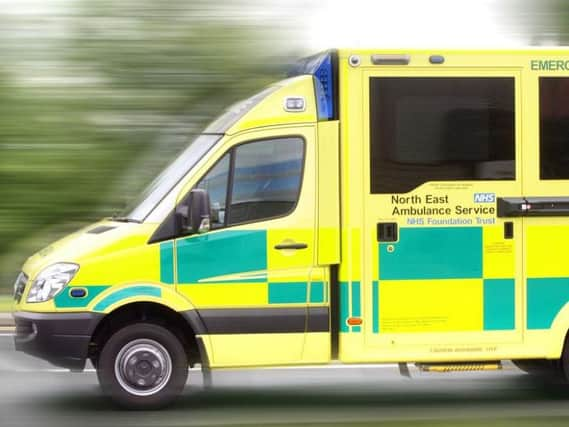Ambulances take patients to the place they want to die


The North East Ambulance Service (NEAS) End of Life Transport scheme gives dying patients the option to be taken by ambulance with a specially-trained crew to the place they want to end their life, anywhere in the region.
The initiative, the first in the North East, will help patients plan where they want to die and ensure they get there in the most caring and comfortable way possible reducing stress levels at a difficult time.
Advertisement
Hide AdAdvertisement
Hide AdDedicated ambulances have been allocated to the seven-days-a-week scheme, along with specialist technicians trained in end-of-life care who will cover the North East region.
In a successful pilot scheme, which ran from October 2015 to March 2016, 1,037 people used the service with more than 80 per cent reaching their destination in less than two hours. The majority (65 per cent) were picked up from hospital and almost half (42 per cent) were taken home to die with the remainder going to hospices (27 per cent), care homes (19 per cent), community hospitals or palliative care units.
For those collected from home (30 per cent), almost half (49 per cent) chose to die in a hospice and 39 per cent wanted to end their life in hospital.
NEAS chief executive Yvonne Ormston said: "Our pilot scheme was extremely successful and well received by both patients and our NHS partners. Thanks to its success we hope to continue this service.
Advertisement
Hide AdAdvertisement
Hide Ad"For those nearing the end of their life, it is incredibly important that they are in a place where they feel comfortable and cared for, surrounded by loved ones. Speed can be critical at this time and our scheme ensures patients are picked up within a timely manner to be taken to their chosen location.
"As well as helping patients think about and plan where they want to end their life, we can ensure they receive compassionate and appropriate care, minimising stress for both the patient and their family at a very difficult time.
"The impact of this service should not be underestimated and we have many stories showing what a positive difference it has made. In one particularly emotional case a very poorly teenage patient wanted to make the journey home from hospital so they could die in their own bed after saying goodbye to family and friends. Our crew ensured the patient was transported home safely and comfortably where they died shortly afterwards surrounded by loved ones."
The service has also been well received by stakeholders.
Macmillan clinical nurse specialist Tony McCoy said: “NEAS’s End of Life Transport Care Service is fantastic and has been a positive experience for everyone I know has used it. The response times have been much faster with discharge and admission to the preferred place of care and there have been several examples where the ambulance attendants have gone way beyond what would normally be expected.
Advertisement
Hide AdAdvertisement
Hide Ad"One example I know of was a patient discharged home to die who was taken to the beach one last time. This person had lived near the beach all his life and it was his dying wish to see it one last time. The crew in attendance made a journey home a special memory for him and his family.”
Anyone who requires the End of Life Transport service should contact their own healthcare professional, including GPs, hospitals or hospices.